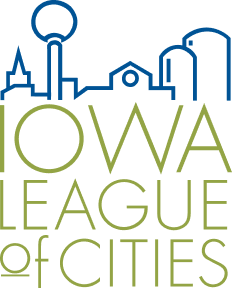As the governing document for the community, the city code book is vital to a successfully managed city. Included are local laws that describe how the municipal government is structured, the duties and services the city is responsible for, how public safety is provided in the community, the regulations that help ensure properties are used and maintained properly and much more.
Codification Requirements
Section 380.8 of the Code of Iowa requires cities to compile a code of ordinances containing all city ordinances in effect, except grade ordinances, bond ordinances, zoning map ordinances, ordinances vacating streets and alleys, and ordinances containing legal descriptions of urban revitalization areas and urban renewal areas. The city clerk must maintain a copy of the code at city hall. Additional copies are frequently placed at the public library and the county law library. Many cities provide a copy of the code to their elected officials.
Maintaining the Code of Ordinances
The city is required to maintain its code in one of three ways:
- The city may compile an annual supplement to the code of ordinances. This supplement consists of all new ordinances and amendments to ordinances that became effective during the previous year. This supplement must be adopted by a resolution of the council and placed in the code of ordinances.
- The city may insert new ordinances or amendments to ordinances directly into the code itself. This must be done at least annually. This works especially well for cities that maintain a copy of their city code as a word processing document, allowing for quick and convenient updating. This service may also be available to cities that use a private codification company.
- If the city does not compile an annual supplement, annually insert changes into its code directly or has not made any additions or amendments to the city code, it must codify the code of ordinances at least once every five years. If there have been no substantive changes to the code, the city may simply adopt the code by ordinance. However, if the city has made additions, amendments or intends to change any code provision, it must hold a public hearing on the proposed code prior to its adoption. The notice of public hearing must be published at least four but not more than 20 days prior to the hearing date. The published notice must state that a copy of the proposed code of ordinances is available for inspection at the city clerk’s office. Within 30 days after the hearing, the city may adopt the code of ordinances. Any new ordinances added during codification become effective upon publication of the ordinance approving the code of ordinances. If the council substantially amends the proposed code of ordinances after the hearing, the notice and hearing process must be repeated.
Failure to follow the state requirement for maintaining your code can result in the city being unable to enforce its laws. In any proceeding to enforce a city ordinance, the city has the burden of proving the existence of the ordinance to the court. A properly maintained or compiled code is presumptive evidence of the ordinances found in the code of ordinances, and courts will recognize and enforce ordinances found in a properly maintained or compiled code of ordinances. If the code of ordinances has not been properly maintained or compiled, the city would have to be prepared to prove each ordinance it wished to enforce by providing a certified copy of the ordinance to the court.
Resources
There are several resources available to cities that can help with developing city codes. Private codification companies may be able to provide cities that use their services with sample ordinances. City attorneys may have access to sample ordinances in addition to insight into enforcement issues. Area councils of government may also offer codification as a service. Drake University’s law school has developed a list of links to online city codes. In addition, the League maintains a file of sample ordinances.






